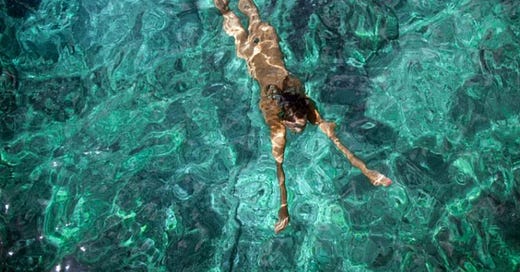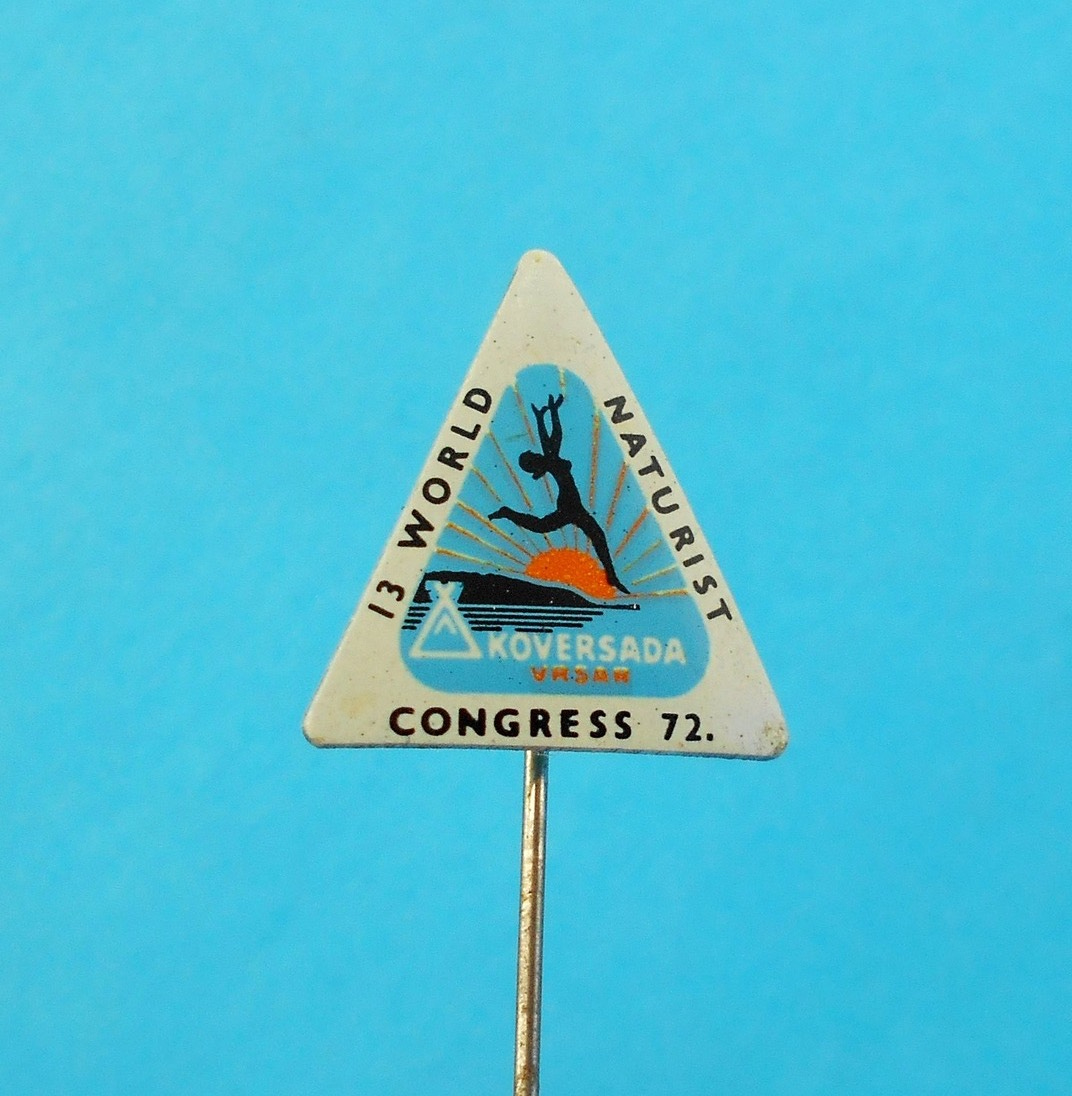S5E5. When Yugoslavia was the naturists' paradise
Thanks to a policy of tolerance tied to economic development, which was unique within Europe, the Federation was one of the most popular destinations for naturist tourism between the 1970s and 1980s
Dear reader,
welcome back to BarBalkans, the newsletter with blurred boundaries.
At one time, there was a naturist paradise. This was Yugoslavia, a federation of socialist republics. Not exactly the western stereotype of a moralizing, illiberal, and socialist country, though it was not Soviet either.
This is why naturism - a lifestyle promoting non-sexual social nudity in private and public spaces, encouraging a less artificial relationship between humans and the environment - can be the key to understanding a country that, for decades, stood as an exception to the opposition between liberalism and communism.
While in Western countries naturism was discouraged or even condemned, on the Yugoslav coasts this lifestyle was practiced with great freedom and tolerated by public authorities.
The origins of Yugoslav naturism
The roots of Yugoslav naturism date back to the period between the World Wars, when groups of German and Austrian naturists traveled to the Adriatic coast in search of unspoilt nature and secluded holiday spots.
It is no coincidence that, especially after World War II, the naturist phenomenon was commonly referred to by the acronym FKK, from the German Freikörperkultur (literally ‘free body culture’).
Around the mid-1950s, German naturist Rudolf Halbig visited the small island of Koversada in Croatia, south of the village of Vrsar. In April 1961, Halbig’s travel agency signed an agreement with the local administration to bring up to 400 German tourists per year for two-week packages to the secluded island, allowing them to practice naturism.
Following the surge in demand, the original small campsite on the island of Koversada was no longer sufficient. A resort with bungalows, restaurants, and sports facilities was created on the mainland, becoming a model for naturist settlements along the entire Istrian and Dalmatian coast.
Between the 1970s and the 1980s, only France could compete with Yugoslavia in naturist tourism. While France could host more tourists due to the larger capacity of its settlements, Yugoslavia had the largest number of naturist camps, hotels and beaches in Europe.
At its peak, the Koversada naturist resort could accommodate 10,000 people, and was just one of the coastal resorts that attracted around a million naturists per year. By the end of the 1970s, there were an estimated 25 established beaches, 34 designated, and 60 ‘wild’ - but still permitted by the authorities - beaches.
In August 1972, the 13th International Naturist Federation Congress took place in Koversada and around 400 people attended the opening ceremony. It was the first time this Congress was held in a country outside the Western Bloc.
The Catholic Church was the only institution that strongly opposed it. As the Catholic Church held significant influence in Croatia, it attempted to prevent the Congress from taking place in 1972.
In contrast, the officials of the Socialist Republic of Croatia and the League of Communists of Croatia were more tolerant and favored the event in Koversada, participating - though in a limited way - with opening speeches.
The leadership of the International Naturist Federation responded enthusiastically: “Yugoslavia is a democratic country, which, in its conception of human freedom, has anticipated others by half a century.”
Why Yugoslavia
The embrace of naturist tourism was one of the most evident differences between Yugoslav socialism and Soviet communism, as well as Western liberalism.
Yugoslavia considered naturism not only as a means of economic profit but also as a lever to promote its image of an open system not aligned with either hegemonic bloc.
For instance, despite acknowledging a social model linked to public morality, nudity - particularly female nudity - was not demonized as it was in the Soviet Union. From the late 1960s, it became influenced by Western trends, especially in the film and music industry.
At the same time, the development of naturism in Yugoslavia intersected with the demand among segments of Western society for greater freedom in experiencing non-sexual social nudity. In countries like Italy, it was not guaranteed at all.
Until the end of the Cold War, Italian tourists who wanted to practice naturism had to cross the Adriatic Sea to escape pressure from the Catholic Church, which had conditioned public and political debate.
Naturism developed in Yugoslavia due to the intersection of several factors. Social and political tolerance towards nudity (within certain limits); local tourism companies looking for profit; the push from Western travel agencies; naturists (mostly German-speaking) looking for unspoilt coastlines and a Mediterranean climate.
Koversada - and beyond - embodied all of this.
Western journalists also reported on the Koversada resort and naturism along the Croatian coast, trying to understand the implications and reasons for the success of this type of tourism. This was clearly evidenced by the article New Tourism Is Uncovered In Yugoslavia, published in the New York Times on 11 August 1977:
“The flow [of tourists, ed] has become so great that at any time in the summer four million foreign tourists are in Yugoslavia. Most of them, and at least as many Yugoslav tourists, are concentrated on the Adriatic coast […] With the realization that they had overinvested in their tourist industry, Yugoslav enterprises sought to fill hotels and resorts with special categories of tourists, including nudists.”
However,
“the modern ‘naturist’ is increasingly reluctant to submit to confined isolation. Furthermore, conditions are now so crowded in and around the most popular Yugoslav beach reasorts that total separation is impractical.”
About the view of nudity in Yugoslav society, The New York Times underlined:
“The country is traditionally conservative in social habits, and the purist ideology of Marxism‐Leninism tends to reinforce conservatism […] Prostitution is kept inconspicuous, and strip‐tease shows and the like are restricted to a handful of tourist hotels. On the other hand if nudism is separated from sexual connotations, it can be viewed as consistent with the ‘sound-mind‐in‐a‐sound‐body’ outlook of the good Communist. Besides, nudism is a good source of foreign currency.”
Although filtered through the Western lens - which often equated Yugoslav socialism with Soviet communism in oversimplified terms - The New York Times highlighted several interesting points of analysis.
The tolerance towards an almost absolute practice of freedom in a society that was nevertheless attentive to public morality; the social aspiration to physical and mental well-being; the economic development also through naturist tourism.
This growth in naturist tourism faced no obstacles until the end of the Socialist Federal Republic of Yugoslavia, when its national components took different paths in a traumatic way. This also applied to the tolerance of naturism in the seas, rivers and lakes of the Balkan peninsula.
Pit stop. Sittin’ at the BarBalkans
We have reached the end of this piece of the road.
On the Istrian coast, where naturist tourists are still welcome, our bar, the BarBalkans, offers biska, a traditional mistletoe-flavored distillate.
The base is usually komovica, grape marc distillate, or jabukovača, apple distillate. White mistletoe leaves are picked from apple trees, added to the distilled base, and macerate for months before the final distillation.
The original recipe dates back around 2,000 years and is attributed to Celtic druids who populated the Istrian peninsula. Bisca is the local name for white mistletoe (Viscum album), whose healing power was already known in antiquity, from the Greeks to the Celts to the Romans.
Let’s continue BarBalkans journey. We will meet again in two weeks, for the 6th stop of this season.
A big hug and have a good journey!
If you have a proposal for a Balkan-themed article, interview or report, please send it to redazione@barbalcani.eu. External original contributions will be published in the Open Bar section.
The support of readers who every day gives strength to this project - reading and sharing our articles - is also essential to keep BarBalkans newsletter free for everyone.
Behind every original product comes an investment of time, energy and dedication. With your support BarBalkans will be able to elaborate new ideas, interviews and collaborations.
Every second Wednesday of the month you will receive a monthly article-podcast on the Yugoslav Wars, to find out what was happening in the Balkans - right in that month - 30 years ago.
You can listen to the preview of The Yugoslav Wars every month on Spreaker and Spotify.
If you no longer want to receive all BarBalkans newsletters (the biweekly one in English and Italian, Open Bar external contributions, the monthly podcast The Yugoslav Wars for subscribers), you can manage your preferences through Account settings.
There is no need to unsubscribe from all the newsletters, if you think you are receiving too many emails from BarBalkans. Just select the products you prefer!









